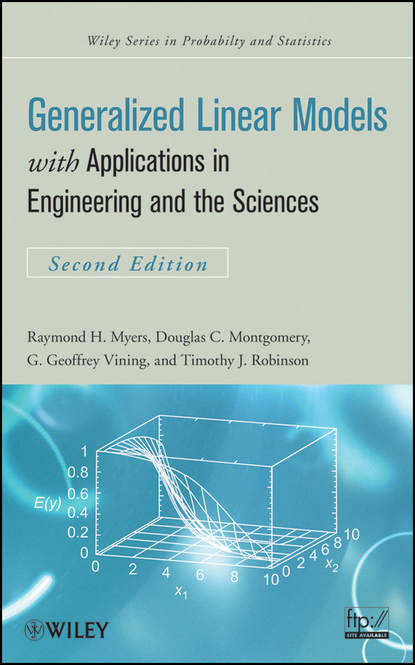Книга "Generalized Linear Models" - это второе издание, которое продолжает являться понятным введением в теоретические основы и основные применения обобщенных линейных моделей (GLM) в инженерии и науках. Авторы подробно изучают различные типы задач, которые поддерживают использование GLM, и обзор основных концепций, таких как множественная линейная регрессия, нелинейная регрессия, метод наименьших квадратов и процедура оценки максимального правдоподобия. Они также демонстрируют разнообразные применения GLM через многочисленные примеры, от классических приложений в биологии и биофармацевтике до более современных примеров, связанных с инженерией и обеспечением качества.
Второе издание было тщательно дополнено и расширено, чтобы включить последние разработки, соответствующие вычислительным подходам и современным примерам из области инженерии и физических наук. В книге также добавлен новый раздел о случайных эффектах и дизайнах для GLM, а глава о логистической и пуассоновской регрессии теперь содержит дополнительные результаты по проверке пригодности, номинальным и порядковым ответам и сверхдисперсии. Кроме того, в книге расширено обсуждение взвешенных наименьших квадратов, включающее примеры, иллюстрирующие, как оценить веса, а также показаны иллюстрации кода R для выполнения анализа GLM.
Книга рассчитана на статистиков, инженеров, ученых и студентов, которые должны понимать и применять GLM в своей работе. Она также является отличным учебником для курсов по анализу регрессии и моделированию на ступени бакалавриата и магистратуры. В качестве дополнительных материалов авторы предоставляют множество иллюстраций компьютерного вывода и дополнительные наборы данных, которые можно скачать с FTP-сайта.
Электронная Книга «Generalized Linear Models - Douglas C. Montgomery» написана автором Douglas C. Montgomery в году.
Минимальный возраст читателя: 0
Язык: Английский
ISBN: 9780470556979
Описание книги от Douglas C. Montgomery
Praise for the First Edition «The obvious enthusiasm of Myers, Montgomery, and Vining and their reliance on their many examples as a major focus of their pedagogy make Generalized Linear Models a joy to read. Every statistician working in any area of applied science should buy it and experience the excitement of these new approaches to familiar activities.» —Technometrics Generalized Linear Models: With Applications in Engineering and the Sciences, Second Edition continues to provide a clear introduction to the theoretical foundations and key applications of generalized linear models (GLMs). Maintaining the same nontechnical approach as its predecessor, this update has been thoroughly extended to include the latest developments, relevant computational approaches, and modern examples from the fields of engineering and physical sciences. This new edition maintains its accessible approach to the topic by reviewing the various types of problems that support the use of GLMs and providing an overview of the basic, related concepts such as multiple linear regression, nonlinear regression, least squares, and the maximum likelihood estimation procedure. Incorporating the latest developments, new features of this Second Edition include: A new chapter on random effects and designs for GLMs A thoroughly revised chapter on logistic and Poisson regression, now with additional results on goodness of fit testing, nominal and ordinal responses, and overdispersion A new emphasis on GLM design, with added sections on designs for regression models and optimal designs for nonlinear regression models Expanded discussion of weighted least squares, including examples that illustrate how to estimate the weights Illustrations of R code to perform GLM analysis The authors demonstrate the diverse applications of GLMs through numerous examples, from classical applications in the fields of biology and biopharmaceuticals to more modern examples related to engineering and quality assurance. The Second Edition has been designed to demonstrate the growing computational nature of GLMs, as SAS®, Minitab®, JMP®, and R software packages are used throughout the book to demonstrate fitting and analysis of generalized linear models, perform inference, and conduct diagnostic checking. Numerous figures and screen shots illustrating computer output are provided, and a related FTP site houses supplementary material, including computer commands and additional data sets. Generalized Linear Models, Second Edition is an excellent book for courses on regression analysis and regression modeling at the upper-undergraduate and graduate level. It also serves as a valuable reference for engineers, scientists, and statisticians who must understand and apply GLMs in their work.



















